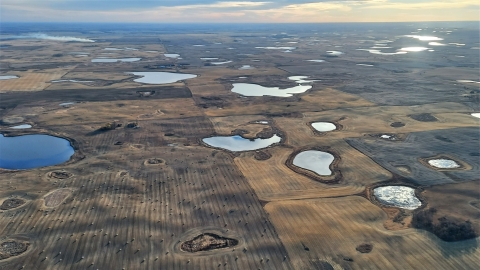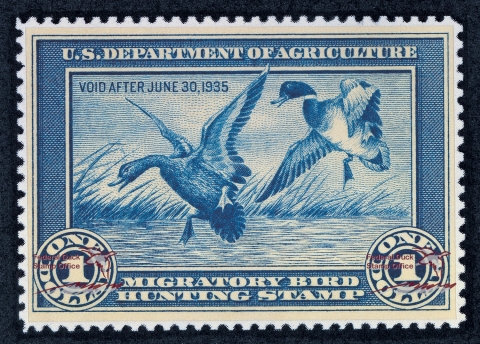About Us
The Crosby Wetland Management District was established in 1962 for the primary purpose of protecting waterfowl breeding and nesting habitat. The Wetland Management District includes Divide, Williams, and Burke Counties, and is located in three physiographic areas. Northern Burke and northeastern Divide Counties are drift plain, an area of large, shallow potholes. South of this, the Altamont Moraine Complex (Missouri Coteau) is approximately 15 to 30 miles wide and crosses the Wetland Management District diagonally from northwest to southeast. South and west of the Moraine lies the Coteau slope, an area of land sloping gently to the Missouri River.
The Wetland Management District includes Lake Zahl National Wildlife Refuge, 99 Waterfowl Production Areas, and numerous wetland and grassland conservation easements. The Wetland Management District is home to a vast abundance of wildlife including ducks and geese, marsh and water birds, shorebirds, songbirds, raptors, and mammals.
Our Mission
Each unit of the National Wildlife Refuge System is established to serve a statutory purpose that targets the conservation of native species dependent on its lands and waters. All activities on those acres are reviewed for compatibility with this statutory purpose.
Wetland management districts conserve an important network of public and private wetland and upland habitat in North Dakota. This network preserves the integrity of the historical and vital resting and breeding grounds of North America’s migratory waterfowl.
As part of the National Wildlife Refuge System, these lands benefit ducks, other migratory birds, threatened and endangered species, and resident wildlife.
The responsible management and protection of this expanding network requires adequate funding, dedicated personnel, and successful partnerships.
Communities and visitors value grasslands and marshes as a beneficial and important component of a diverse, healthy, and productive prairie landscape.
Current and future generations can enjoy wildlife-dependent uses of these lands. Partners, especially waterfowl hunters, actively support and encourage the Wetland Management District's habitat conservation programs.
Our History
Prior to European settlement, northwest North Dakota was settled by Native Americans. The dominant native vegetation was mixed-grass prairie. The most common native shrub was western snowberry (also known as buckbrush or wolfberry) with rose and buffaloberry also being present. Groves of aspen and willow, with an occasional cottonwood, grew on the rims of wetlands.
The land around the Wetland Management District was homesteaded in the late 1800's and early 1900's. Farming was the primary land use, followed by livestock production. The Great Depression of the 1930's forced many farmers to sell land and livestock. The early 1940's, however, ushered in a period of prosperity that caused a boom in small grain production. Native prairie is still being broken and converted to cropland today.
Fred Staunton, the Refuge Manager at Waubay National Wildlife Refuge in South Dakota, began documenting significant reductions in waterfowl populations in the 1940s, which he, and many others, thought was a direct result of the massive wetland drainage programs at the time.
This created an impetus for developing the Small Wetlands Program, which Congress officially created on August 1, 1958 by amending the 1934 Migratory Bird Hunting and Conservation Stamp Act. The amendment allowed for proceeds from the sale of Federal Duck Stamps to be used for the perpetual protection of some of the most threatened and productive migratory bird habitat in the United States through fee-title acquisition and easements.
This development ultimately led to the establishment of the Crosby Wetland Management District in 1962.
Other Facilities in this Complex
Lake Zahl National Wildlife Refuge is an unstaffed, "satellite" National Wildlife Refuge that is managed by the Crosby Wetland Management District staff. Visit the Lake Zahl National Wildlife Refuge website to learn more about what the refuge has to offer.

